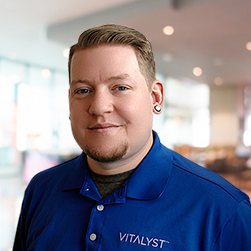What’s the difference between employees who simply show up for work and those who contribute all they can to their organization?
Engagement.
Disengaged employees can hinder a company’s ability to compete in the remote or hybrid workplace, and can cost enterprises greatly in their recruiting, onboarding, and training efforts, as well as being a detriment to their overall reputation. An invested, connected worker can be a key factor in a business’s innovation, agility, and success—all needed to survive as the COVID-19 pandemic continues and thrive long after the virus is eradicated.
The greatest difference between the two types of workers is their size—according to the ADP Research Institute, 86 percent of workers globally are simply “coming to work,” while just 14 percent are fully committed and contribute all they can to their workplace. This represents a downward trend since the report was conducted in 2018, when 15 percent of employees worldwide were engaged.
Employee engagement is critical to an enterprise’s success. It’s a positive state of mind characterized by “vigor, dedication and absorption In particular:
- VIGOR is the willingness to invest yourself entirely into work and refers to high levels of conscientiousness, persistence, energy, and mental toughness.
- DEDICATION is a strong connection to your work and a sense of significance, pride, enthusiasm, and challenge.
- ABSORPTION is being involved deeply in your work, so much so that time passes quickly and disconnecting from work can become difficult.
Numerous studies have indicated a solid relationship between employee engagement and performance, profitability, employee turnover, safety, and customer satisfaction. In addition, researchers have found strong links between employee engagement and job satisfaction, positive job attitudes, and company commitment.
The challenge for organizations today is to avoid getting stuck on why employees are not engaged and instead focus on how to prioritize and increase engagement.
Here are a few ways you can support and drive employee engagement initiatives:
- ENCOURAGE TEAMWORK WITH THE RIGHT TOOLS: According to the ADP report, employees who are part of a team are almost three times as likely to be fully engaged than those who are not. Companies across the world have had to find a tool that fosters collaboration in this remote and soon to be hybrid work environment. With over 115 million daily average users, Microsoft Teams and its features (like Together mode and break out rooms) make it the industry leading teamwork platform. Investing in a tool like Microsoft Teams become the hub for your employees, allowing them to communicate and work together seamlessly—no matter their physical location.
- KEEP THE MOMENTUM GOING WITH THE RIGHT TRAINING: Gartner states 70% of employees feel they do not have the skills they need to do their job successfully. This skill gap may be due to a lack of IT leadership or resources, which leaves the workforce and company at risk for “low morale, burnout, and turnover”—in short, disengagement.
Vitalyst’s Adaptive Learning Platform provides end users with direct access to enterprise-class training services, delivered through our Learn Now App in Teams. Through its wide range of learning mediums, like live software coaching, support, and training, Adaptive Learning will help your employees become more productive and engaged.
- PRIORITIZE CULTURE CHANGE: One of the most difficult challenges for
enterprises is letting go of the idea that employee engagement is something that can be implemented or switched on. Increasing engagement is part of a larger, ongoing effort—a complete change in technology and how people use it to get their work done.
Companies must adopt an upskilling approach that’s focused on motivating change at the individual level. For example, Prosci’s ADKAR model—which figures prominently into Vitalyst’s services—focuses on the five stages people experience when making a change:
- Awareness of the need to change
- Desire to participate and support the change
- Knowledge about how to change
- Ability to implement new skills and behaviors
- Reinforcement to make the change stick
In the race to become more agile and innovative, many organizations overlook one of the key drivers of success—the employee. Without a focus on workforce engagement, employee experience initiatives are more likely to fail—no matter how advanced their technology. The time is now to begin connecting and empowering your employees, for 2021 and beyond.











